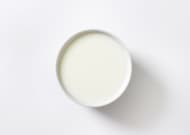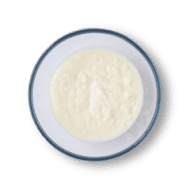How to make curd?
There is hardly anyone who doesn’t enjoy the dense creaminess of a bowl of curd or the humble dahi, as it is called locally. Be it any season, the light and cool curd is one of the most-eaten comfort foods. Did you know that almost every South Indian ends all his meals with a bowl of curd rice to soothe the stomach after all the spices and fiery flavours that he has eaten?
Curd is enjoyed either on its own or eaten as
raita mixed with chopped vegetables like carrots, onions, cucumbers, and herbs along with spices. Not just this, curd is an important ingredient for making a number of delicious snacks. Some of the most popular curd recipes include
baked dahi vada,
dahi ke kebabs,
curd red rice, etc. It also makes a great accompaniment to spicy and sour main course meals like
tamarind rice, biryani,
tomato rice, pulao, parathas,
matar pulao, seekh kebabs,
cauliflower lemon rice, etc.
Other curd recipes include delicious and creamy fruit smoothies and added to breakfast cereals to make them filling and more nutritious.
What are the health benefits of curd?
Curd is not only delicious, but it is so nutritious that it is often termed as a superfood. And there are great reasons for it too. Curd is a great source of proteins, good fats, carbs, calcium, vitamin B12, riboflavin, potassium, magnesium, phosphorus, etc. All the nutrients help in fighting several diseases and disorders and preventing deficiencies.
Some of the most important health benefits of curd include:
Curd, being a great probiotic i.e. it contains gut-friendly bacteria, soothes the stomach, and clears the digestive system. It helps improve your gut activity, soothe inflammation, and treat disorders like constipation, gas, bloat, etc.
The live cultures in curd act as immunity boosters. They help in preventing germs that cause infections like colds, coughs, etc.
A healthy gut directly impacts the health of your skin. Not just this, but the lactic acid in curd also helps maintain the elasticity and suppleness of the skin, clears it off blemishes, and removes dead skin cells.
The magnesium and potassium content of curd is helpful in regulating your blood pressure. It also prevents high blood pressure. These, in turn, help in maintaining a healthy heart.
Having a bowl of curd daily helps in reducing your cholesterol levels and keeping your arteries clean. This helps in reducing the risk of cardiovascular issues.
Curd contains a significant amount of calcium that is essential for maintaining optimum density of bones and strengthening them. It helps prevent fractures and the risk of osteoporosis. This is also helpful in strengthening your teeth and preventing dental issues.
When your curd recipes are fortified with fresh fruit, seeds, and vegetables, they become more filling. When eaten with meals or as an in-between snack, it helps in avoiding binge eating and is helpful in reducing weight.
When applied on hair, curd helps in conditioning your hair and making them stronger. It also helps in preventing and curing dandruff and hair fall.
It helps in improving your appetite and meeting your nutritional deficiencies especially when you have just recovered from an illness.
What are some tips for making great-tasting and rich curd?
Before we share the recipe of how to make curd at home, here are some tips that will help you make the richest, creamiest, and the thickest curd every time you make it.
Thinking of how to make curd at home that’s thick and creamy? Use full cream milk instead of the skimmed or toned versions.
Always boil milk before you make curd at home. This is to ensure that the milk doesn’t spoil during the fermentation process.
When you make curd at home, ensure that the milk that you are using is neither too hot (the curd comes out grainy) nor too cold (the curd will not set). The milk should be lukewarm.
Thinking of how to make dahi with good consistency? Ensure that you mix the curd cultures well in the milk.
Curd sets faster in summers than in winters. Allow the curd to set accordingly giving it time.
Thinking of how to make curd with an earthy and rustic fragrance? Use an earthen vessel to set it.
Thinking of how to make curd last longer? Refrigerate it immediately the minute it is set.
How to make dahi at home that’s luscious and super-creamy? Froth the milk before using it. You can either froth it vigorously using a spoon or a blender.
An important tip for how to make dahi properly is to not use sour curd culture to avoid turning the entire curd batch sour.
Want to know how to make curd during winters? Place it in a casserole or near an oven to fasten the process.
How to make thick curd? Set it with a broken red chilli. This sets the curd well without changing its taste.
One final tip for how to make curd like a pro! Experiment and try at least 2-3 times to get to understand the exact process. You will surely learn the ropes of setting a rich and delicious curd every time you make it at home.
How to make curd?
A lot of us always wonder how to make curd at home that tastes as creamy as the one that we get to eat at restaurants. Learning how to make curd is pretty simple. Here is how to prepare curd at home:
Take 4 cups of full-fat milk and bring it to a boil on medium heat.
Once the milk gets boiled, simmer it on a low flame for around 15 minutes.
Keep stirring the milk to avoid letting it burn or leave a strong smell.
Transfer it to a container and add one tablespoon of curd.
Make sure that you stir in the curd well to mix it properly.
Transfer this to a container of your choice and cover those with foil and keep them in a warm place.
Allow the curd to sit undisturbed for 6-8 hours.
Once it has set, move the container to the refrigerator.
Enjoy the thick and creamy curd.







